Augmented Reality
Enrichment of the user’s perception
Augmented reality (AR) refers to the real-time integration of digital information into a user’s environment. AR technology overlays content onto the real world, enriching a user’s perception of reality rather than replacing it.
AR devices are equipped with cameras, sensors and displays. This can include smartphones and tablets creating mobile AR experiences or ‘wearables’ like smart glasses and headsets. These devices capture the physical world and then integrate digital content (for example, 3D models, images or videos) into the scene, blending digital and virtual worlds.
I started to develop Augmented Reality applications for various clients in 2017 and work with different AR solutions and tools since then. I specialize in three types of augmented reality and these are:

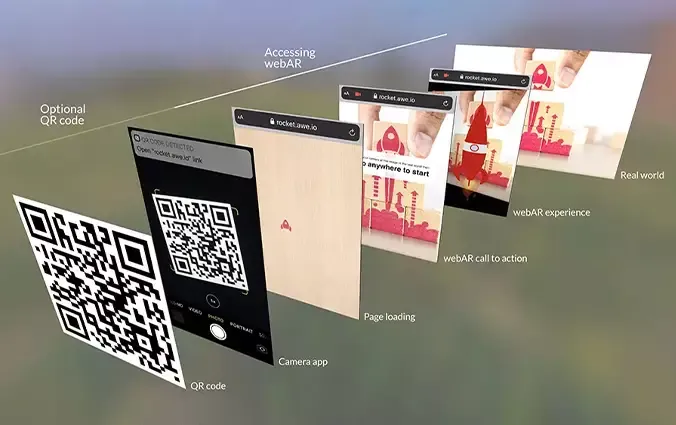
WebAR
WebAR is augmented reality that happens through the web browser, without the need for an app to be installed. This means no app downloads and a quicker route to the experience for the end user.
For this reason it’s usually the favoured approach for the use of AR. The pace of development is rapid – with richer experiences, better tracking and better sharing features.
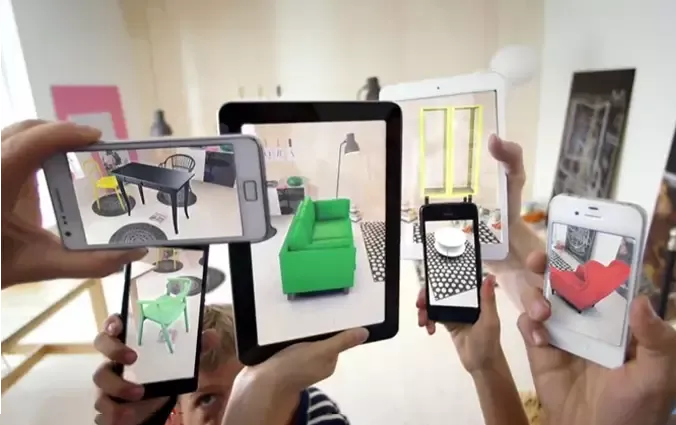
App Based AR
App based AR allows the full suite of features available, which earn AR it’s place as a truly immersive technology.
If you’re interested in being able to access the future potential of AR experiences, and understand how to maximise connections between digital and physical engagement, discussing the capacity of app based AR with me is a great way to start.
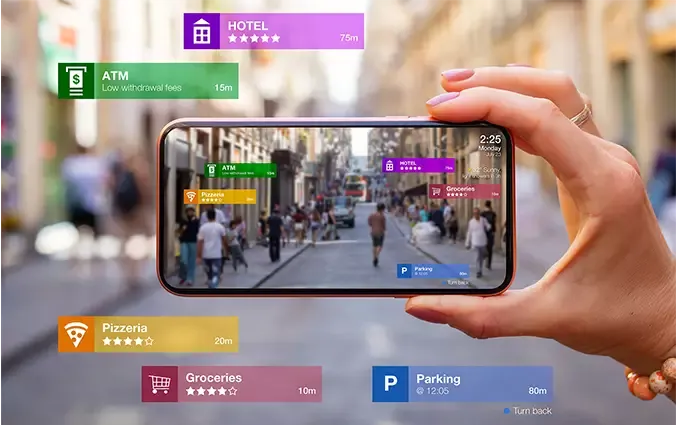
Location-based AR
Location-based AR is also known as markerless, position based and geo-based augmented reality.
It primarily relies on GPS, accelerometer, digital compass and other technologies to identify phone's location and position with a high level of accuracy. Modern devices are mostly equipped with these sensors, so it is available for every mobile device owner.
New AR technology
for museums
A new perception when exploring museums
In collaboration with the Museum of Cultural History I tested and evaluated the use of new Augmented Reality technology for the visitors in the new Viking Age Museum.
Integrating this technology to a mobile device, either phone or tablet, offers a new perception when exploring museums. The possibility to add a layer within the experience of visiting a museum will improve the educational moments and it become fun and interactive too. The enrichment of sensory perception using video, graphic and text elements has found a home within museums.
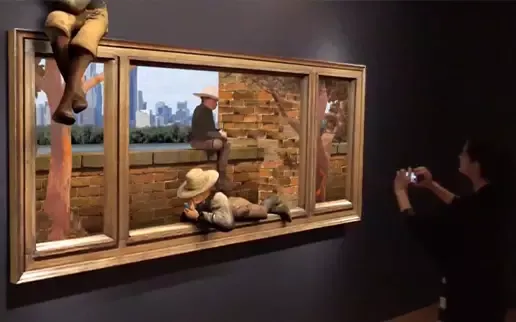
Revolutionizing the interaction between the visitor and the artefacts.
ARIM (Augmente Reality In Museums) was one of my main projects and has been successfully completed. The projects ARIM01, ARIM02 and ARIM03 were in close cooperation with the Museum of Cultural History in Oslo to use new Augmented Reality (AR) technology to fill the gap between the visitors and the artefacts with interactive stories and visualisations.
My responsibilities:
New technology
To find the most effective way to introduce new forms of interactive technology and to test this AR technology to be used in the new Viking Age Museum.
Development
To develop AR applications that improve the experience and knowledge of the Viking history as illustrated in the textile fragments and other objects from the Viking Age.
Research
To research the experiences with this new AR technology and to advice how to improve this experience. A part of this research was the usertest done by the University of Oslo.
Overview
To publish an overview of all experience gained which will lead to a better understanding of the new possibilities of AR technologies and the integration of these new technologies in museums.

Usertest by University of Oslo
97% of children are very positive about our AR applications!
The University of Oslo did an usertest with children and it turns out that 97% of the interviewed children are very positive about our AR applications for the Viking Ship Museum and no less than 89% thinks that it is fun (gøy) and 80% thinks that they learned much because of our solutions.
This is great news and it is clear that children accept our new AR solutions quickly and without any problem.

Augmented Reality
in education
A Staggering Insight Into The Future
Augmented Reality is capable of augmenting computer-generated graphics into the real environment on screen. It means if you move your mobile camera to space, AR enables you to see a computer-generated object on your screen. Altogether, it happens in real time while you view it from your camera. This technique can enable students to learn in a more interactive environment.
With AR, classroom education can be extraordinary and more interactive, as AR can enable teachers to show virtual examples of concepts and add gaming elements to provide textbook material support. This will enable students to learn faster and memorize information.
Augmented Reality can bring a breakthrough to the traditional education system by transforming the complete learning experience. Altogether, it will also impact the interest of students and make them efficient. Also, this will help students in comprehending concepts in an immersive environment, which will simplify concepts and make learning easy.
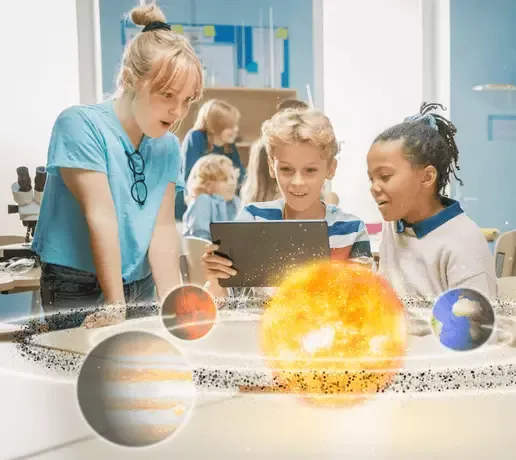
Benefits Of AR Technology In Education
AR applications in education enable a wide range of benefits. Here are some advantages of using AR in education:
A Swift and Effective Learning System
AR in education allows students to gain knowledge through rich visuals and immersion into the subject matter. The concept of eLearning with AR targets a major information-gathering sense in humans.
Easy Access To Learning Materials
Augmented Reality can replace textbooks, physical forms, posters, and printed brochures. This mode of mobile learning also reduces the cost of learning materials and makes it easy for everyone to access.
Engage Students And Spruce Up Their Interest
The gamification of AR and the education system can make students' attitudes more positive. It makes learning interesting, fun, and effortless and improves collaboration and capabilities.
Various examples
Below you can see some examples of my different AR applications in the Netherlands and Norway: